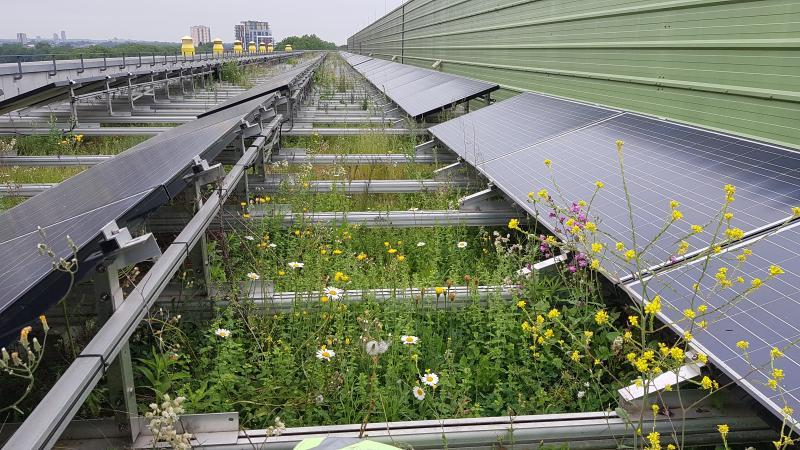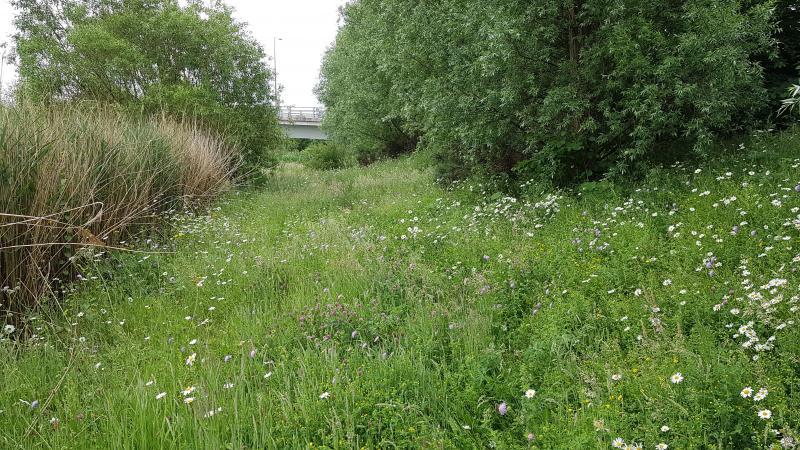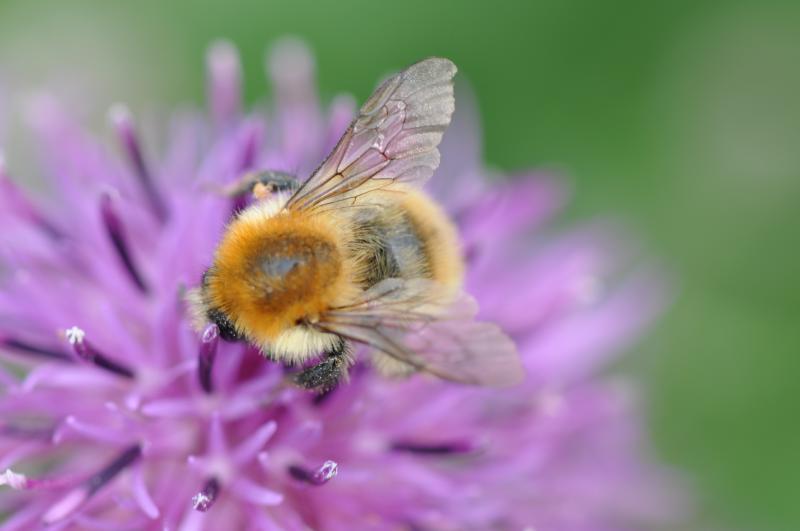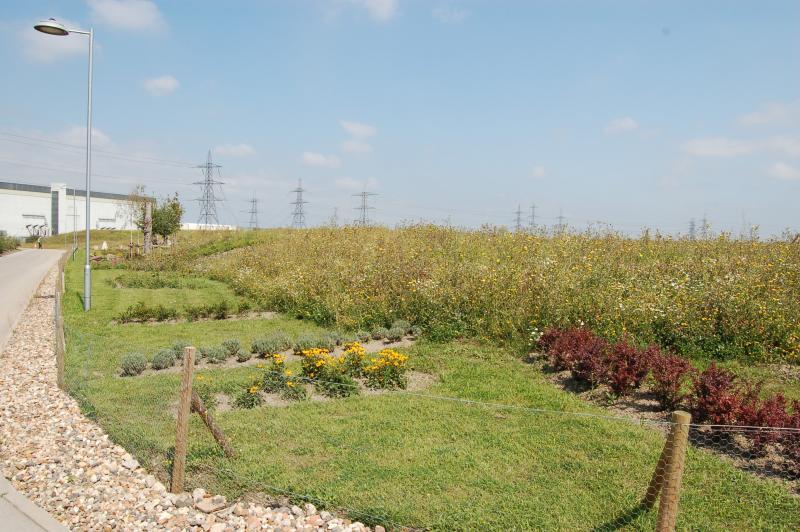With a new stream of studies adding to evidence revealing disturbing declines in global populations of insects (Hallmann et al. 2018), Lister & Garcia 2018,(Sánchez-Bayo and Wyckhuys 2019) and reports of an ecological catastrophe on the scale of a sixth mass extinction, there is an urgent need to do more to conserve these species that underpin our ecosystems. Urban areas have the potential to provide a safe haven for many rare and declining species that have been extirpated from our rural landscapes by intensive agricultural practices (Benton et al. 2003). But only if we manage those safe havens appropriately!
In our last essay at TNOC we discussed the phenomenon of ecological gentrification – “blandscaping” that excludes substantial proportions of biodiversity that urban areas can potentially support. We proposed a mechanism to combat this effect; taking more inspiration from nature and natural systems through a locally contextualised approach to urban greenspace design. We included examples of innovations that are pushing the boundaries in terms of embedding ecological functionality into greenspace design. A year on, the innovation in this field continues to grow. It is inspiring to see more and more examples of an ecological approach to green infrastructure, with nature-based solution projects that put locally important biodiversity at the heart of the design of multifunctional greenspaces.
A recent research project has given us a timely reminder, however, that innovative urban greenspace design also needs innovative management if our nature-based solutions are to sustain diverse populations of biodiversity in urban areas:
This summer we were commissioned to survey one of our old favourite monitoring grounds. Our scope was to investigate how effective the design and management of the site was in supporting invertebrate biodiversity. As part of the original green infrastructure masterplan for the site, planning included preparation of a Biodiversity Action Plan (BAP) that identified key species and habitats for the site, and set out targets for their conservation and enhancement. Monitoring progress towards these targets was also a key aim of the BAP. The outcome of this masterplan process was a multifunctional exemplar that unites the social, economic and environmental value of greenspace and marries it with design for wildlife.
We have previously been contracted to survey individual areas on the site, and each time we visit we record rare and interesting species, expanding understanding of the diversity of wildlife that can be supported in semi-formal landscaped urban areas. There can be no question that the design of this greenspace includes an innovative blend of social and ecological functionality, and that the result is an attractive space that meets many of the Biodiversity Action Plan’s objectives. You may have noticed though that up to this point our focus has been on design innovation. In contrast to previous years, this summer we expanded to monitor both ground-level biodiversity hotspots and green roofs. This gave us the opportunity to compare these two types of nature-based solutions on a single site. In so doing, it brought the impact of management of these respective areas into stark focus.

The ground level areas of the site we surveyed comprised a series of wildflower meadows, some combined with scrub and young woodland areas, others with a more open pasture-inspired design. These meadows were distributed across the site in a variety of situations, for instance bordering amenity grass areas and river corridors, and included different topographies and aspects. This created a mosaic of environmental niches for nature to exploit. The green roof we were also surveying had comparable habitat complexity in many ways. This included a variety of aspects (created by a high barrier dividing a central infrastructure area from the green roof), substrates, and structural diversity generated by different hydrology and shading regimes. Both the ground-level and roof-level habitats embodied some of the principles of ecomimicry that can be so valuable when designing for nature in cities.
The wildflower-rich areas at ground and roof level were the main target for our surveys. Whilst not directly comparable in terms of area and the sampling effort used across habitat patches, the same survey techniques were adopted on the different levels (direct observation/hand-searching, sweep net surveys and pitfall trapping). Repeated sampling methods were adopted, enabling comparison of patterns in each area across the survey period (early to late summer). It was also possible to compare the proportion of rare and scarce species in relation to the total catch size by calculating a Species Quality Index (SQI) for each area. Survey results were positive, with nationally rare and scarce species recorded in all areas surveyed, including 4 of the Park’s 7 Biodiversity Action Plan target invertebrate species. A diversity of more common species from groups such as butterflies, bumblebees, dragonflies and damselflies were also recorded, providing an oasis of nature for local communities to enjoy.

Despite these positive results for both roof and ground level habitats, when patterns of species abundance and the representation of scarce species were interrogated in more detail, it was apparent that not all areas were equal. During the early summer survey, there was a predominance of nationally rare and scare species at roof level compared to ground level habitats. This is perhaps counter-intuitive to what one would expect, due to the relatively greater range of habitats and niches associated with the ground level sites. By the second survey the comparatively greater value of the green roof for rare and scarce species had declined slightly. This decline appeared correlated with the effects of the very hot dry summer in London this year. By the time of this second survey, the green roof was clearly drought-stressed, with only a small proportion of plants managing to survive in moister habitat niches created by the roof’s novel habitat mosaic design. Whilst the ground-level meadows also suffered during the prolonged heatwave, their deeper substrates offered greater resilience to the drought. As such, they continued to flower longer, and thus improved comparatively to the green roof in terms of species abundance and total scarce species recorded.
At the time of the last survey in September however, a real lightbulb moment occurred. When we returned to the site for our final visit, two of the three ground level meadows had been strimmed to within an inch of their lives. Coinciding with this management, our survey results showed that the number of invertebrate species (and proportion of rare species) on these areas had plummeted. This pattern of late cutting, an appropriation of a management technique used in arable situations, is an all too familiar practice in both urban and rural areas in the UK. This approach perhaps stems from a clear conservation message that us ecologists have been promoting over the years. In the face of global declines in pollinators, there has been a strong driver to turn amenity grass areas into wildflower meadows, with an equally strong management message not to cut meadow areas when they are in flower, so that we don’t remove pollen and nectar resources for our valuable bees/pollinators.
A really positive outcome of this has been the creation of networks of pollinator meadows that now criss-cross our urban landscapes. Unfortunately, pressure to “tidy up” these pollinator havens is great, often driven by a desire to make urban greenspace look managed and neat. The consequence of this is that, as soon as the flowering season is coming to an end, the wildflower meadow is assumed to have no further value. The entire vegetation resource is then removed by a wholesale strim in late summer once flowering has diminished.
 This is happening across our urban landscapes on a grand scale, and with almost choreographed timing. We see examples of it not just at this survey site, but as standard practice across the streets and parks where we live. Even on our university campus (where we have our own Biodiversity Action Plan and have restored nature to provide staff and students opportunities to experience wildlife), the landscape managers follow the same prescription: one day pocket meadows full of architectural stems and attractive seedheads, and the next, mechanised destruction that leaves nothing standing across almost the entire campus.
This is happening across our urban landscapes on a grand scale, and with almost choreographed timing. We see examples of it not just at this survey site, but as standard practice across the streets and parks where we live. Even on our university campus (where we have our own Biodiversity Action Plan and have restored nature to provide staff and students opportunities to experience wildlife), the landscape managers follow the same prescription: one day pocket meadows full of architectural stems and attractive seedheads, and the next, mechanised destruction that leaves nothing standing across almost the entire campus.
This blanket, almost generic, approach to urban grassland conservation management has an enormous impact on the ability of many species to persist in these areas. Countless species, including some pollinators, rely on resources provided by these meadows beyond just the pollen and nectar offered by flowers. Seeds provide food, thick grass swards are used for nesting, and seed heads and stems for overwintering. If these resources are removed, the species associated with these resources disappear too. And this was the pattern observed on our survey site. Despite the nature conservation objectives of the Biodiversity Action Plan, blanket removal of grassland areas following flowering prevents a broad diversity of species, including some of the rare and scarce target species, from being able to persist in the habitat that has been created for them.

The negative impact from this cutting management was demonstrated by the results of our surveys. We saw dramatic declines in the total number of species recorded on the cut areas, particularly for scarce conservation priority species. The SQI score for each survey area followed a similar pattern. Values for the areas managed using blanket cuts were substantially lower than for the green roof, also lower than the one meadow area that was left uncut. It would be expected that an opposite pattern would be seen with appropriate management, due to the greater habitat diversity on and around the ground-level meadow areas and their greater resilience to the summer drought. This finding highlighted to us the profound impact inappropriate management can have on innovatively designed urban greenspace.
This effect of blanket management on areas designed to be wildlife refuges is one we encounter frequently. Lessons on how these areas could be managed can be taken from some of the more industrial areas of our urban landscapes. As detailed in our previous essay, brownfield (post-industrial) sites can host some of the most rich and diverse populations of wildlife found in our urban areas (Gibson, 1998; Bodsworth et al., 2005). Whilst part of their biodiversity value is due to habitat heterogeneity created by the diversity of substrates, topography and contamination typical to these sites, another key aspect is their management or, more precisely, lack of it. Rather than regimented, intensive management, biodiversity-rich brownfield sites tend to have sporadic and localised disturbance. This enables wildflower resources, beyond just nectar and pollen, to persist, and therefore support the diverse array of wildlife that depend upon a continuity of resources.
Numerous species can only persist (and by persist we mean to successfully complete their life cycle) if the wildflower resources necessary for their entire life cycle are left intact over appropriate spatial scales. If habitat areas are subjected to blanket cuts, these species disappear. Lack of intensive management means that high quality brownfield sites have become a valuable reservoir for many of these species. Examples include:
- The Diptera species Acinia corniculata (UK Red Data Book (RDB) 1 – Endangered species) that develops in the dry fruit heads of black knapweed (Centuarea nigra) only if they are left in-situ throughout the winter.
- One of our survey site’s Biodiversity Action Plan targets, beetle Mordellistena neuwaldeggiana (RDBK), that uses dead stems in tall grassland for over-wintering and larval development.
- Another Biodiversity Action Plan target beetle at the site, Olibrus flavicornis (RDBK), the larvae of which probably develop in the flower heads of Autumn Hawkbit (Scorzoneroides autumnali) (Harvey 2018).
- The blue carpenter bee Ceratina cyanea (Red Data Book 3), which nests and overwinters in hollow twigs and stems (McGill 2017).
And it isn’t just invertebrates that suffer from this habitat loss. Many declining bird species such as linnets (Carduelis cannabina) and sparrows (Passer domesticus) are dependent upon the bountiful seed sources provided by uncut wildflowers and grasses during autumn and winter. Both species forage on fallen seed and standing seedheads and will feed on invertebrates overwintering in plant tissues. These important food sources that are crucial to keeping birds alive throughout winter are now generally confined to unmanaged brownfield sites in the urban landscape. Hedgehogs (Erinaceus europaeus) also suffer from this need to tidy (remove standing dead plant material) and simplify (cut everything in one go) our urban greenspaces. During the day and during winter hibernation, hedgehogs sleep in specially built nests. These are often hidden in long, overgrown vegetation and the nests themselves are constructed from dead plant material. Over-management of greenspace resulting in the loss of suitable nesting vegetation is a key threat to declining hedgehog populations in the UK.
Presumably, within the context of our survey, one of the key reasons the green roof performed so well for rare and scarce species (SQI 9.5–equivalent to national significance for nature conservation) was because it wasn’t subjected to this standardised management intervention (with summer drought-stress providing a natural process to suppress dominant species and maintain a diverse sward). As such, conditions on the roof mimic those on biodiversity-rich urban brownfield sites. The less frequently cut meadow area also scored similarly highly. If we want to avoid extirpating these species from our urban areas through ecological gentrification, then we must not only take a mosaic approach to how we design our greenspaces, but also to how we manage them. This means staggering the timing of cuts of wildflower areas to ensure that a continuity of resources is provided, and, most critically, leaving some areas uncut for longer durations.
There are examples of innovation in this approach to management too, whereby sections of meadow are cut at different times and patterns are cut in the sections to create interesting borders for areas left uncut. This has the double advantage of ensuring that the areas look managed (and therefore not abandoned) and are visually interesting. Such a management approach can also have the added advantage of being more cost effective as less cutting is needed annually!
As we homogenise and sterilise our rural landscapes with intensive agriculture, and disconnect our populations from nature in shining metropolises, it is more pressing than ever that the potential for urban areas to support wildlife is maximised. We must therefore strive for and share innovation in the design and management of urban greenspaces, so that ecological gentrification becomes a thing of the past and our declining species can flourish in our cities.



